The main thing about Yellowstone National Park, and something that I didn’t fully process until we were right in the middle, is that it is actually a giant active supervolcano. A supervolcano is exactly what it sounds like – a huge monster volcano, or more scientifically, one that at some point has blasted more than a thousand cubic kilometres of stuff into the air in one eruption. That’s a level eight on the Volcanic Explosivity Index, an index that goes up to eight.
From what I can gather, “liquid hot magma” in the earth’s innards rises up into the crust but is unable to break through it. The magma pools up and pressure builds over a long period. At some point, the crust cannot contain it, and boom. Because the blast is so big, the whole thing collapses on itself, leaving a depression or caldera. Yellowstone National Park is centred on its caldera which is a massive 72km x 45km, and was created after the last super eruption about 640,000 years ago. A huge magma chamber still sits deep under the park – the dimensions: 60km x 30km x 10km.
All of this means that at Yellowstone, you see a lot of volcanic stuff going on. The park is supposedly home to half of the world’s known hydrothermal features. These are four main types that we saw:
Hot springs. Surface water seeps underground, is heated by the magma deep below, and rises to the surface as superhot water. Here, there is no constraint on the water flow – water can rise, cool, and sink freely. Depending on the temperature, the water either comes up frothing, simmering, or quite still.
(‘Churning Caldron’ in the Mud Volcano area)
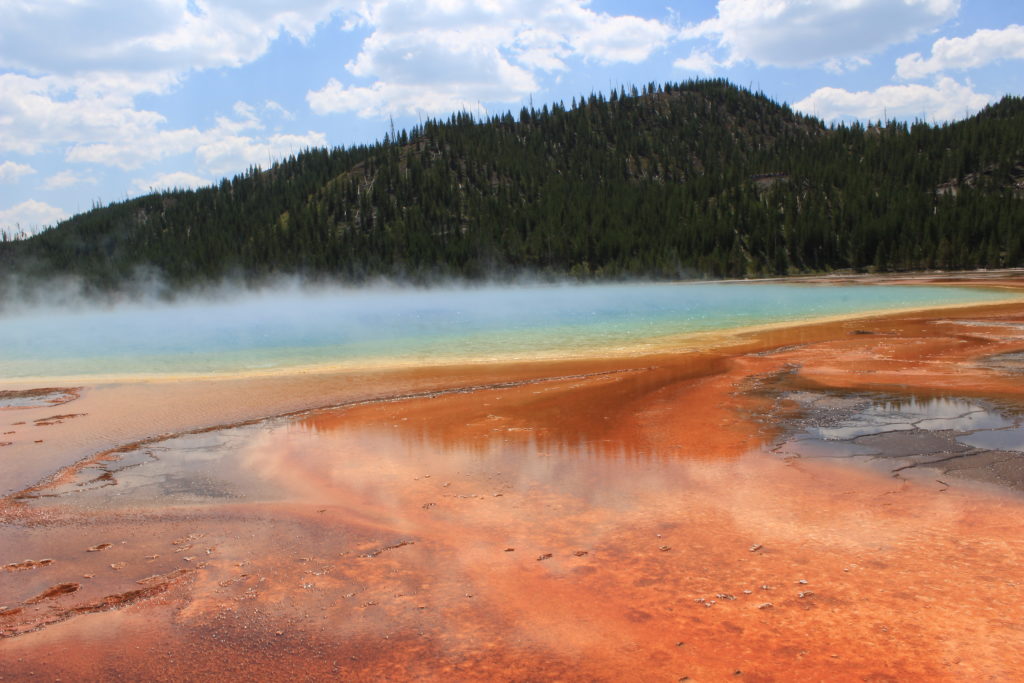
This is the ‘Grand Prismatic Spring’, the third largest hot spring in the world. It is over 60 metres across and the water is a toasty 70 degrees which ensures a steady layer of steam above it. As the water pumps out of the hot spring it runs off in all directions. Jillions of tiny little creatures called thermophiles form colonies in the run-off, resulting in mats of orange and brown under these water run-offs. This is a brilliant contrast to the deep blue of the water coming out of the spring.

Here are a few more hot springs.
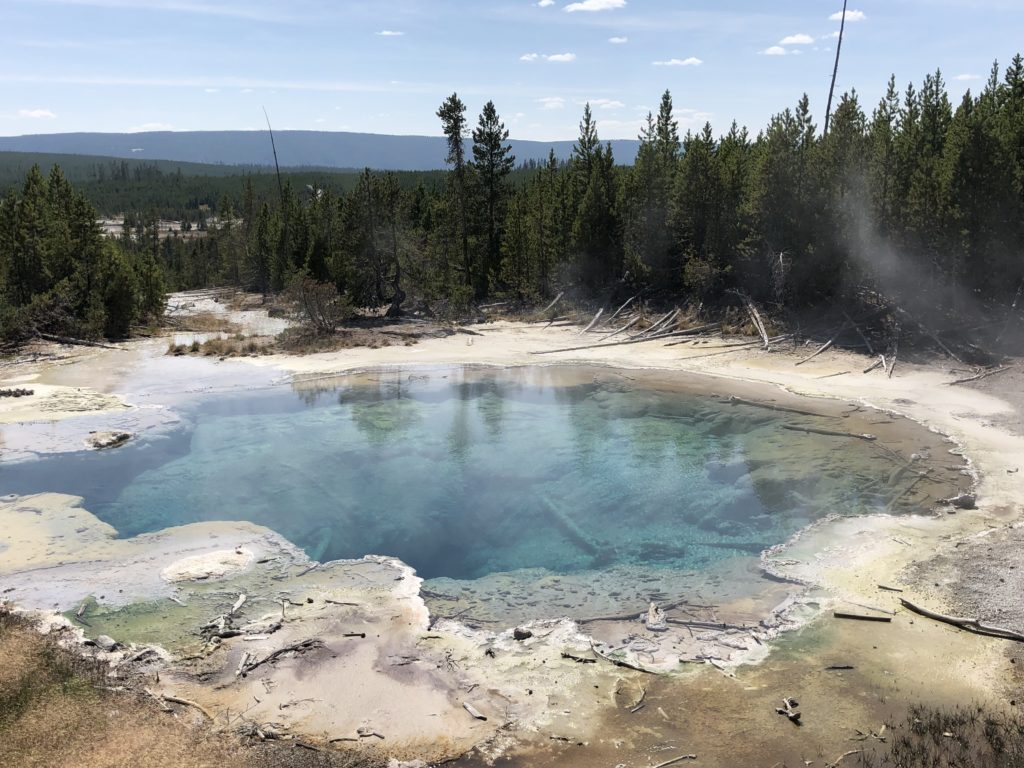
(‘Emerald Spring’ in Norris Geyser Basin – the presence of sulphur brings out some yellow and green, and smells it)
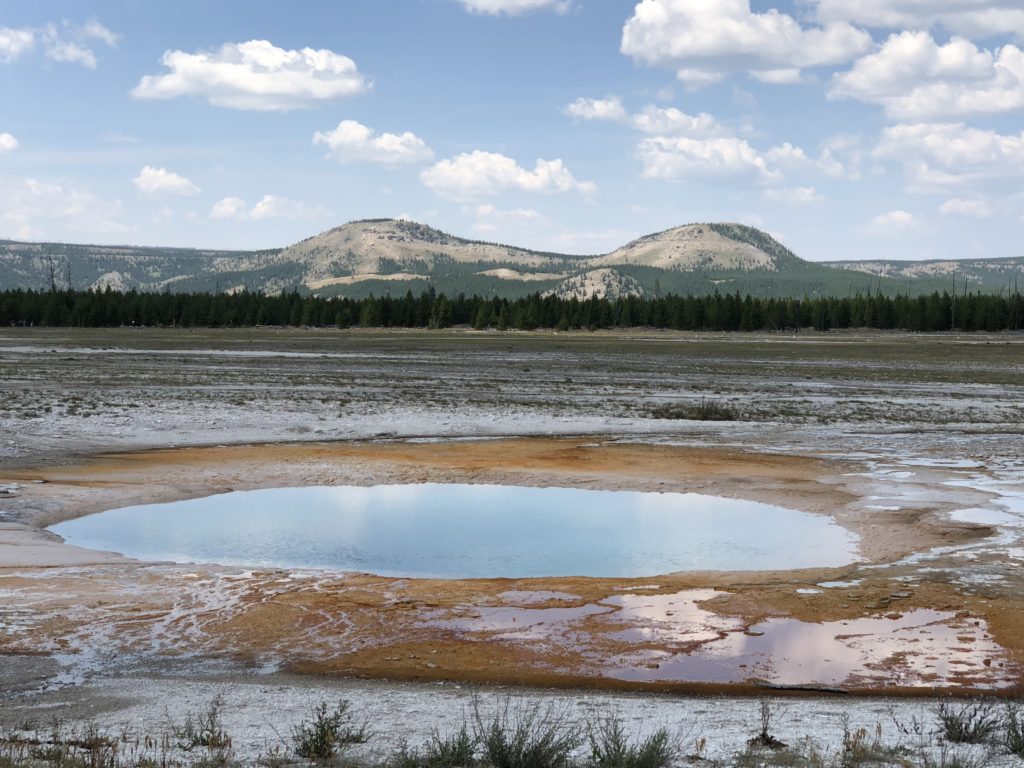
(‘Opal Pool’ in the Midway Geyser Basin)
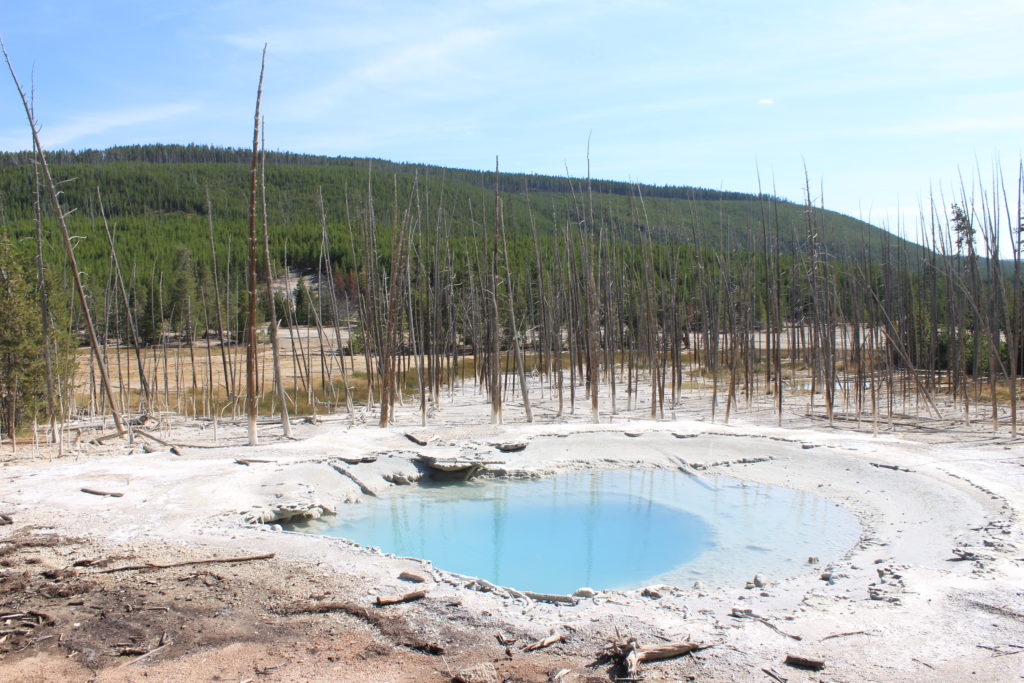
(‘Cistern Spring’ in Norris Geyser Basin – made me think of “Latrine? Before that it was Shithouse”)
Geysers. The same idea as hot springs, except there are narrow spaces in the feature’s plumbing, usually quite near the surface. This stops water circulating easily, and instead there is a build of pressure followed by an eruption of steaming hot water. Sometimes these eruptions are fairly regular, the classic example being Old Faithful. Park management can usually tell within 10 minutes when it will erupt and post a big sign nearby the geyser with their prediction – they were about 1 minute late when we were there.
Seeing Old Faithful erupt is probably the number one ‘must-do’ event at Yellowstone (everyone and their dog), and so a large boardwalk has been prepared for the viewing. It starts with a few smokey puffs for about 5 minutes and then the water starts gushing out.
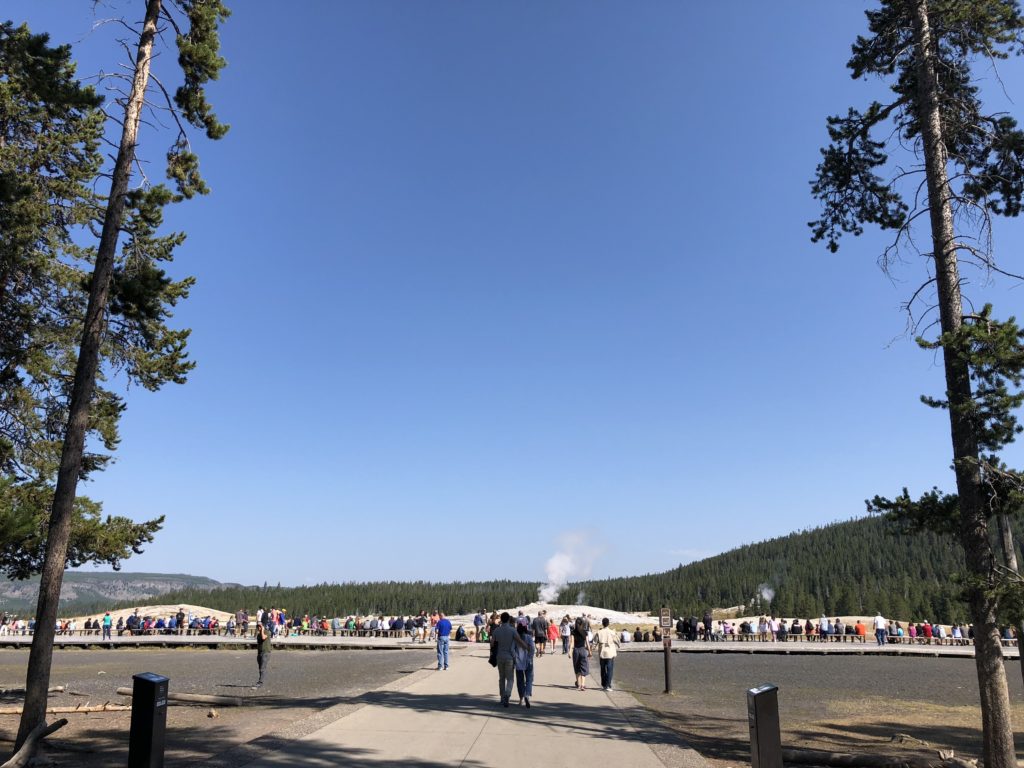
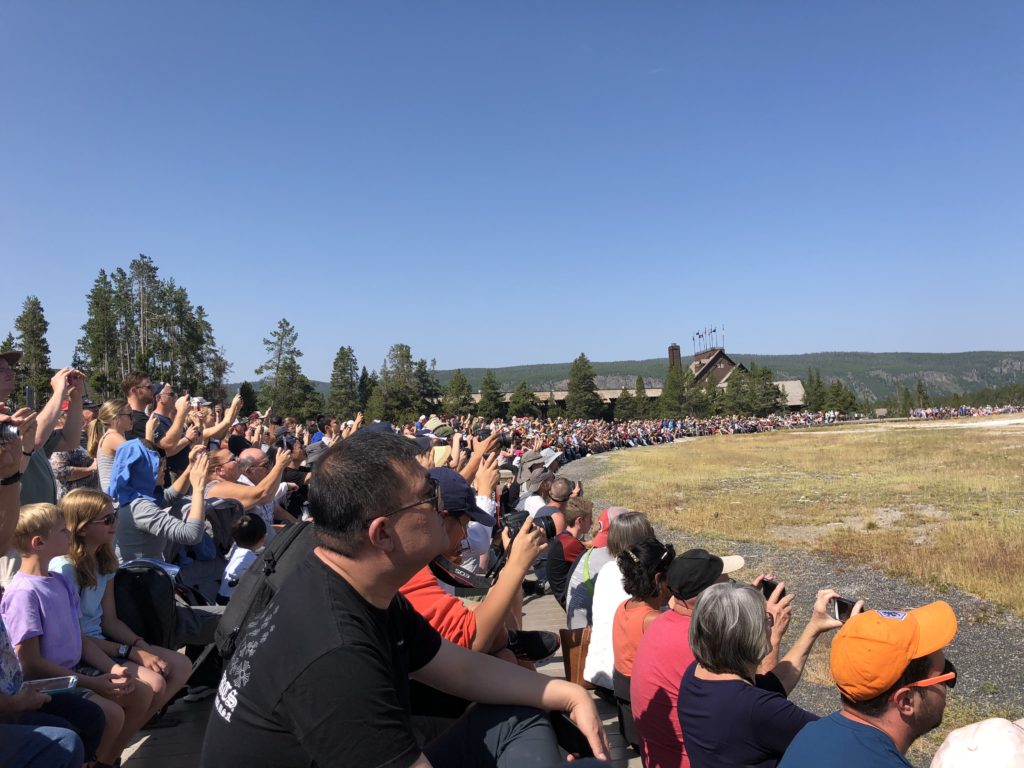
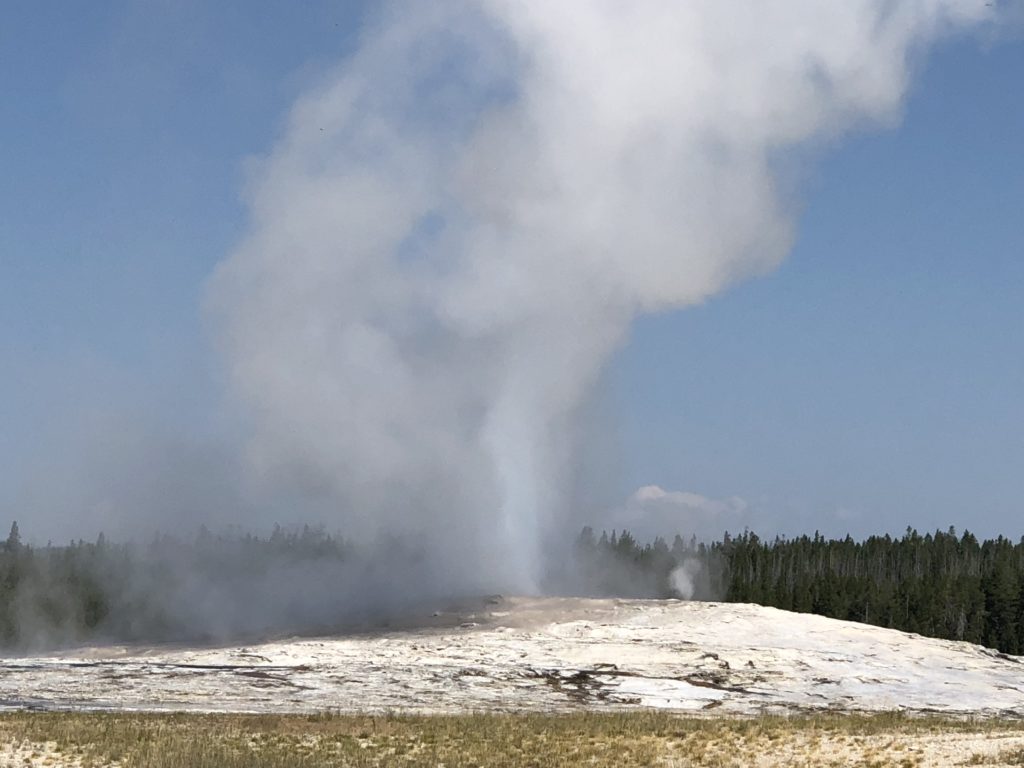
A whole village has grown around Old Faithful’s basin of geysers – shops, hotels, conference rooms, ranger centres, the works.
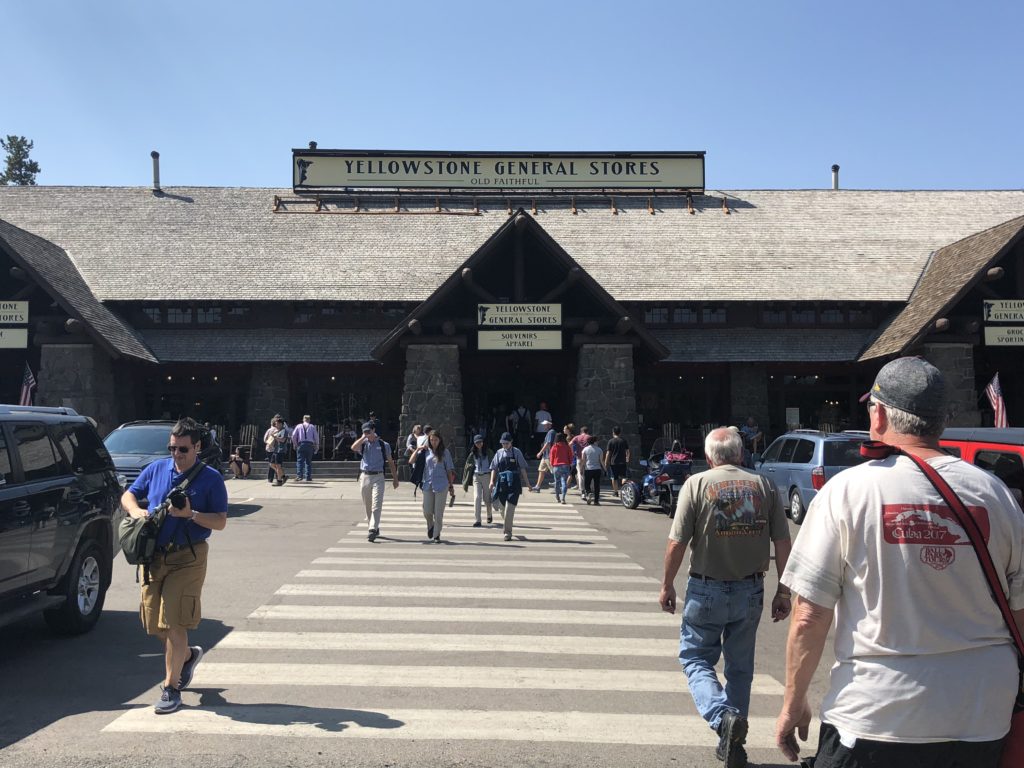
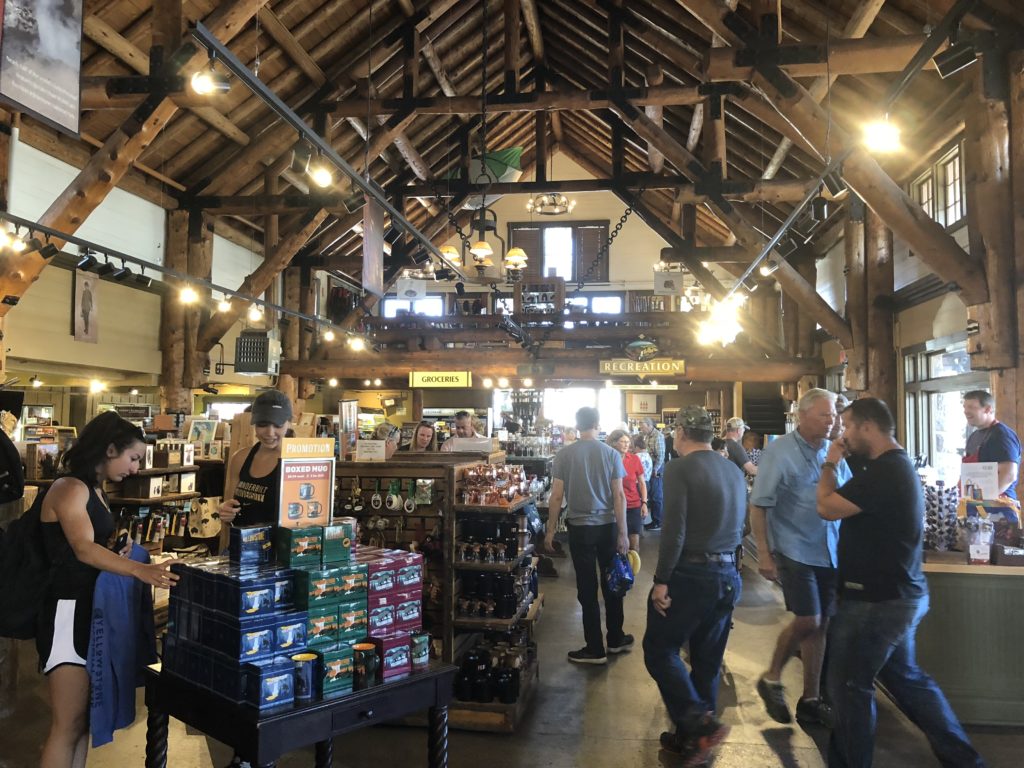
The huge Excelsior Geyser below, in the Midway Geyser Basin, looked a lot like a hot spring because its fountain-part has apparently been dormant since 1985. Water still pumps out and, along with run-off from the Grand Prismatic Spring, feeds a steady stream of hot water into the Firehole River. (The names are all very cool!)
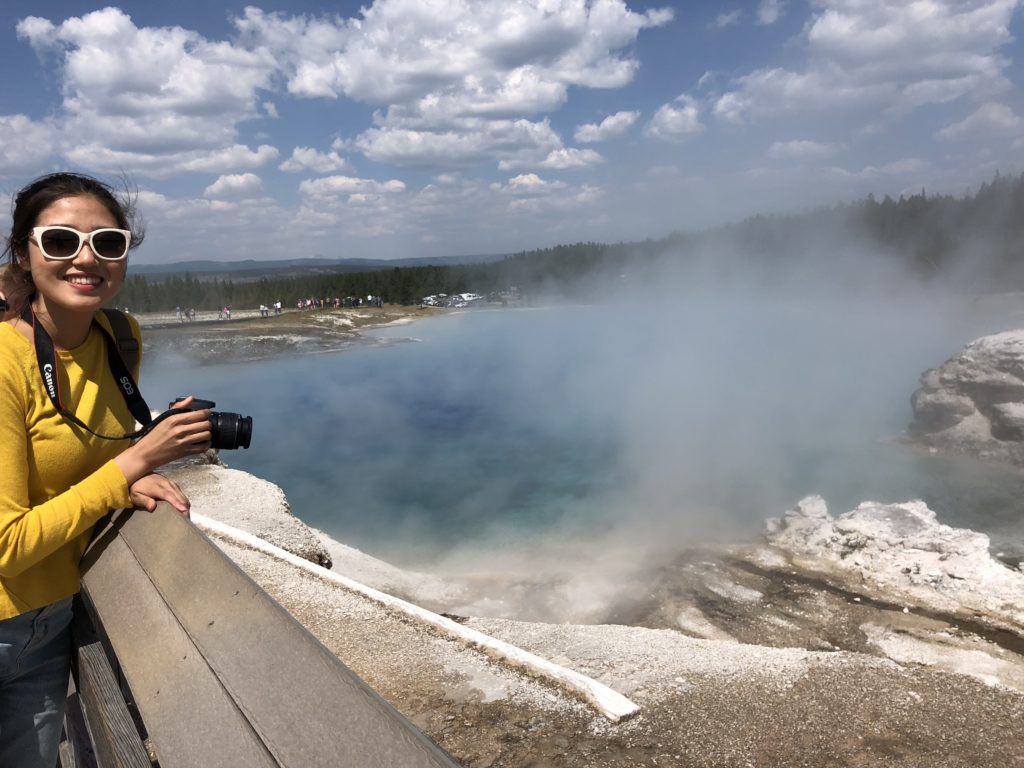
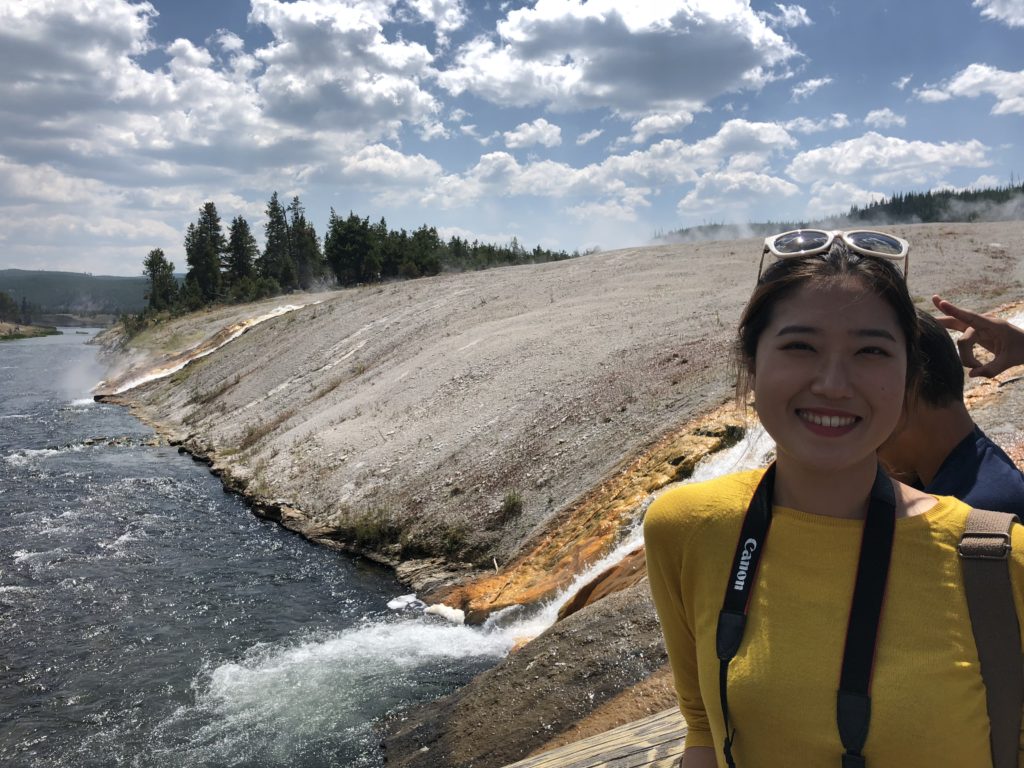
Another fun geyser is Steamboat, the tallest currently-active geyser that can spurt water 91 metres into the air! Eruptions can occur somewhere between 4 days and 50 years apart. Amazingly, it had erupted two days prior to our visit, so unusually there was zero chance of any geyser action. However, given its name, we were treated to a steady plume of steam.
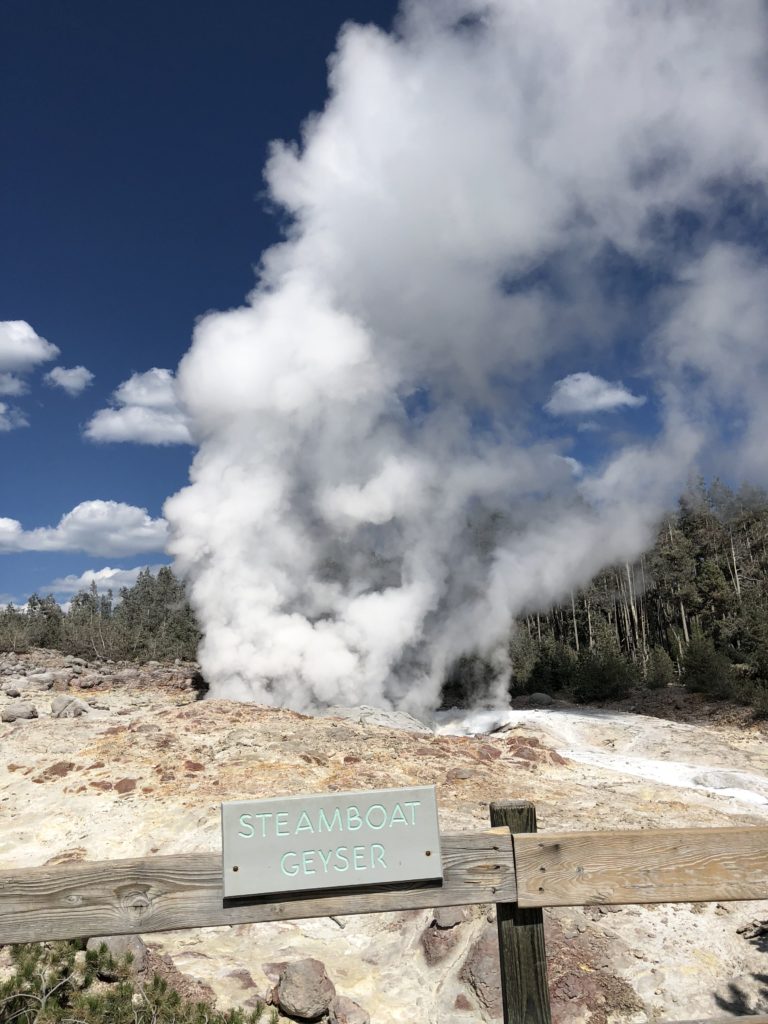
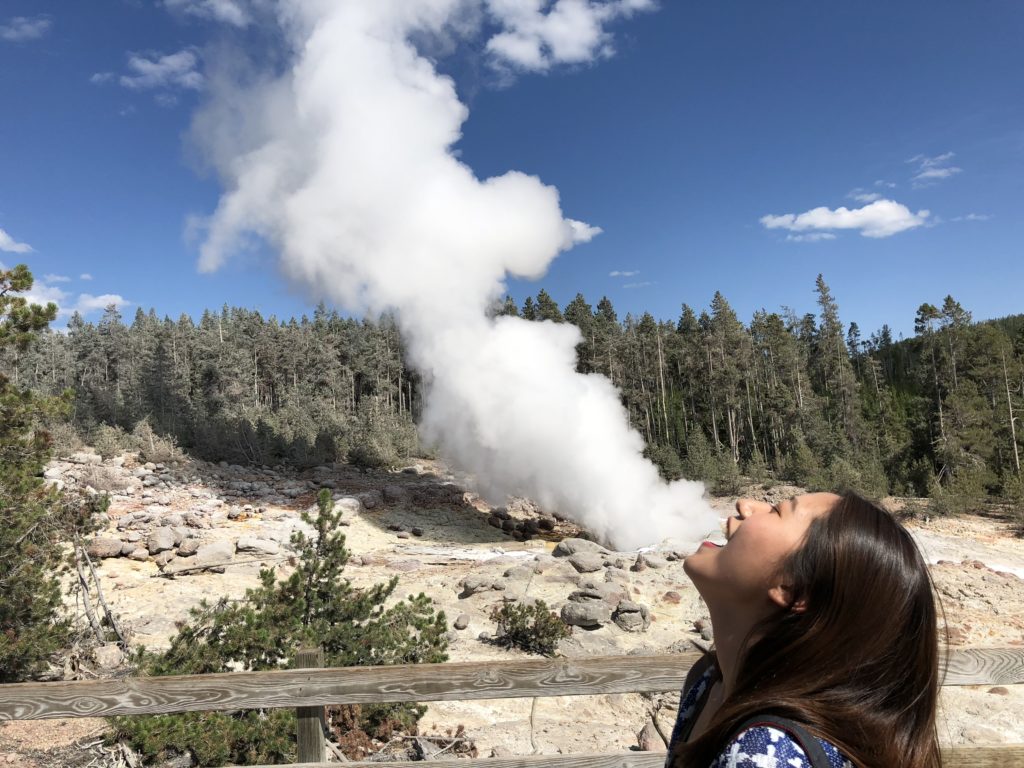
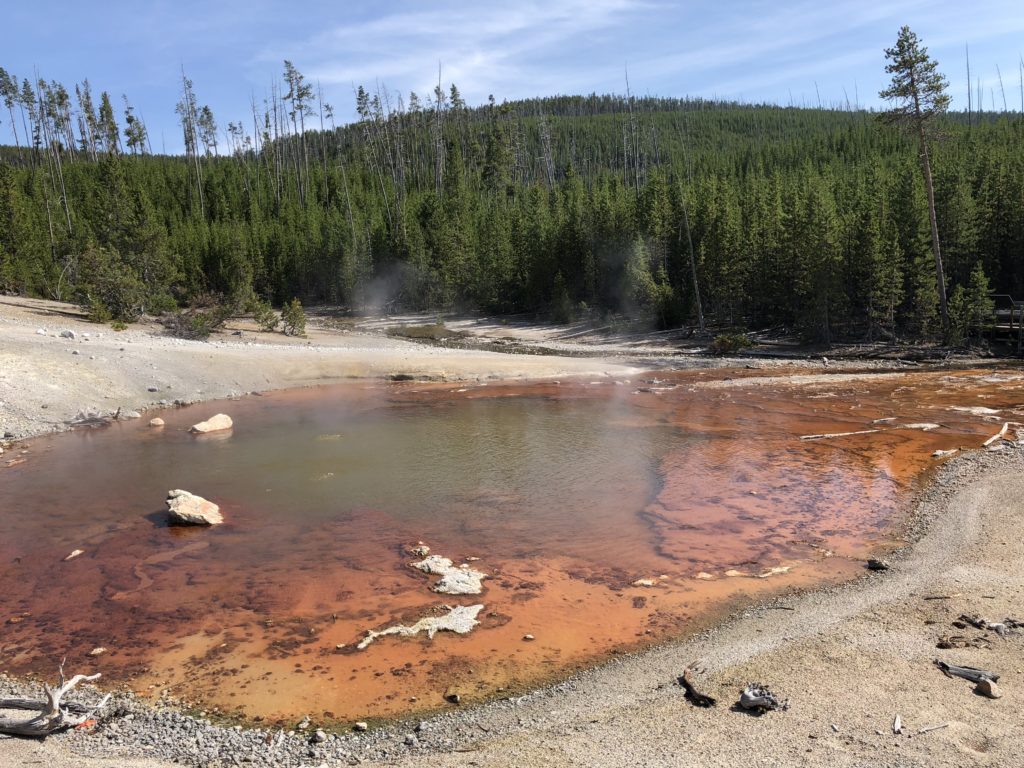
(”Echinus Acidic Geyser’ – metal from the rocks below builds up rust-coloured sinter spines in the water)

(‘Vixen Geyser’ in Norris Geyser Basin)
Fumaroles/steam vents. Here, there is only a limited amount of water, which quickly turns into steam before reaching the surface. All you see is steam piping out of a strange hole in the ground, often hissing and whistling as it escapes.

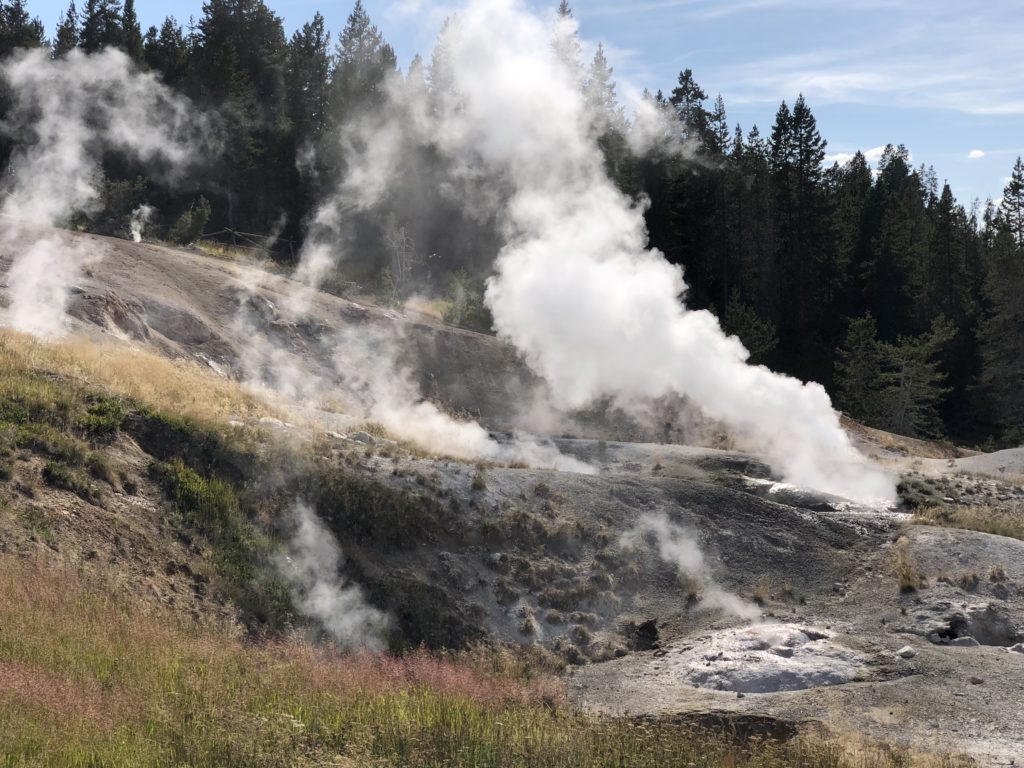
Mudpots. These are similar to steam vents, except that acid is produced when volcanic gases are decomposed by strange microorganisms. This acid then goes on to melt the surrounding rock, turning it into muddy clay. The steam then looks like its bubbling out of the muddy ground.

The presence of these hydrothermal features, randomly distributed all over the place, makes for the most fascinating landscapes – from beautiful smoke plumes rising in the middle of a dense forest to desert-like alien terrain that seems scarred and torn. It’s a truly awesome place.
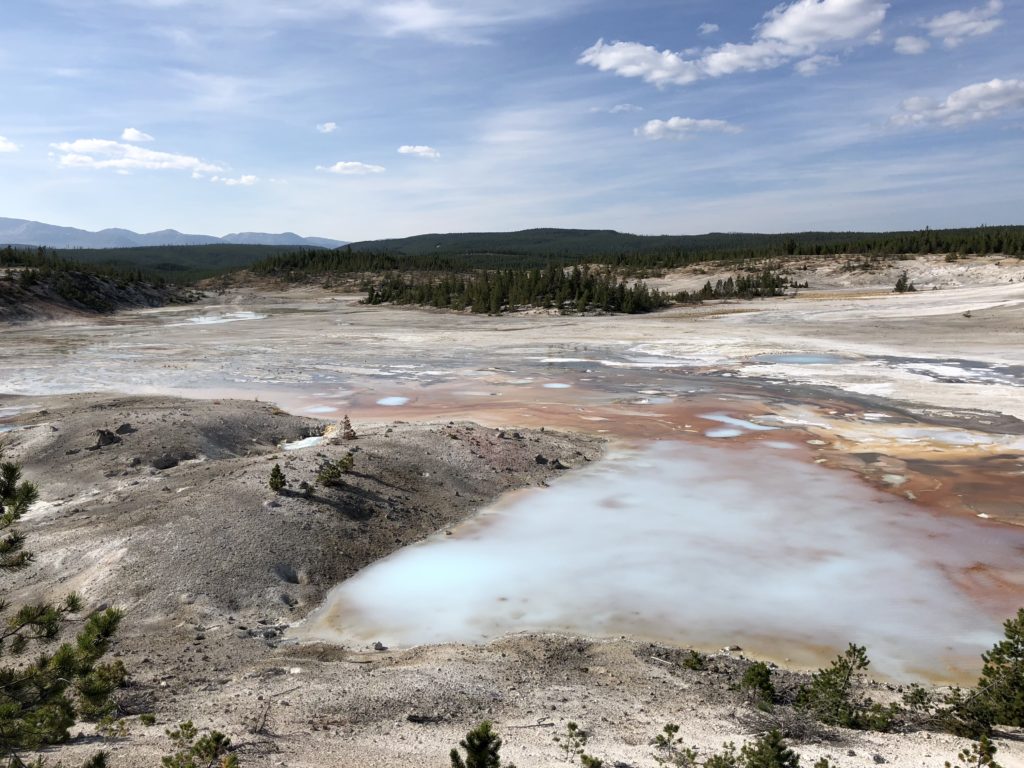
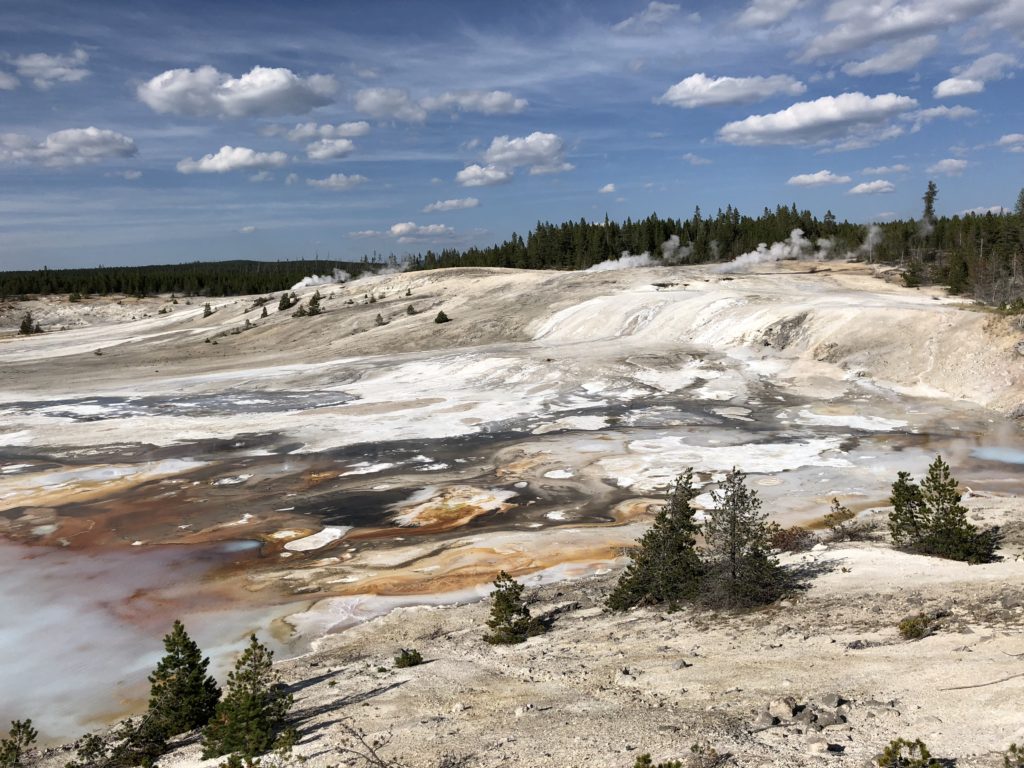
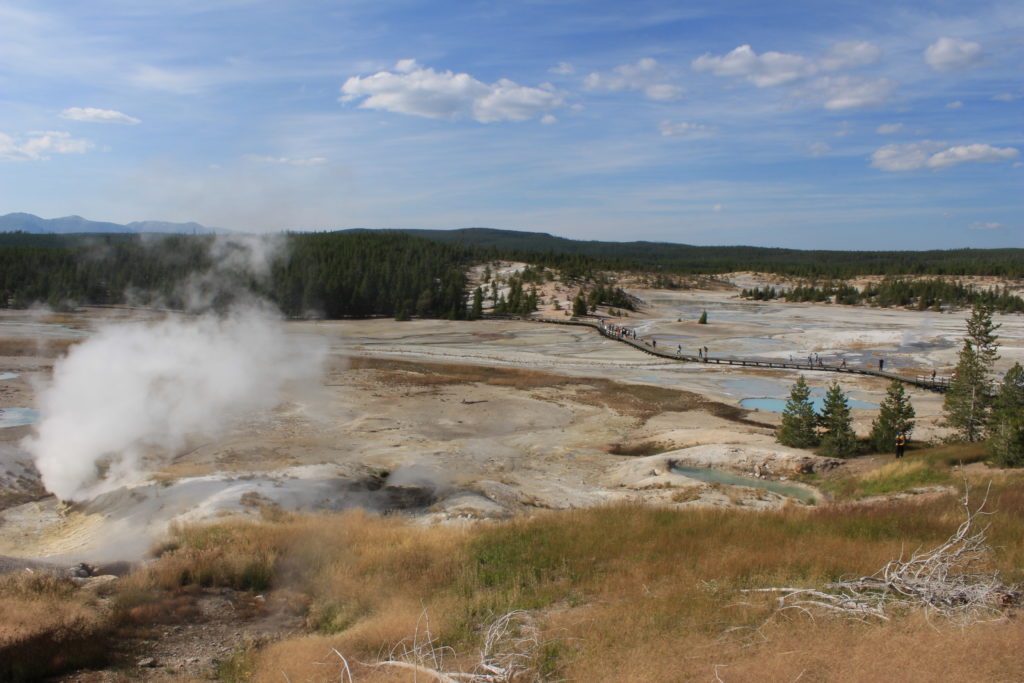
But it isn’t all about volcanic stuff. Yellowstone is not only the oldest national park in the country but, according to the Americans, is also the oldest national park in the world (established in 1872). It is also large – 100km north to south and about 90km east to west – bigger than some of the smaller US states like Rhode Island and Delaware and not that much smaller than Belgium. The whole park sits on the Yellowstone plateau at about 2,400m above sea level, a pretty high altitude in the heart of the Rocky Mountains. It’s about 75% forest, with the rest being grassland and lakes. The continental divide runs through the park – on the one side of the line the water runs off west to the Pacific, while on the other side the water runs off east to the Atlantic.
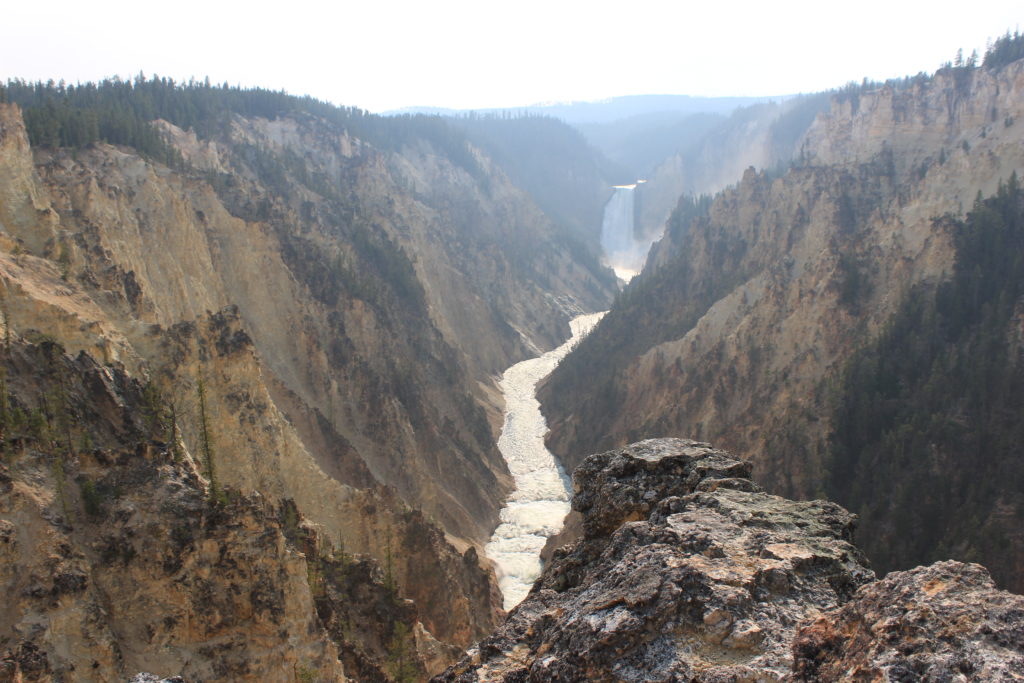
(Lower Yellowstone Falls on the Yellowstone River entering the ‘Grand Canyon of the Yellowstone’)
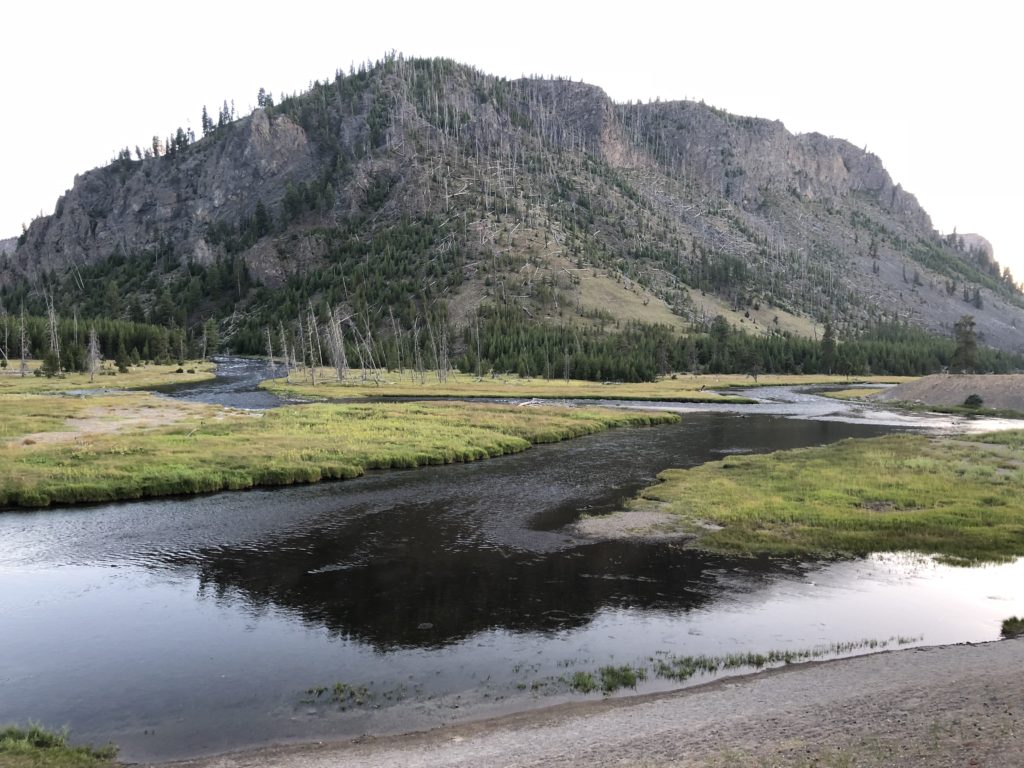
(Fly fishing central at our campground near Grant Village)
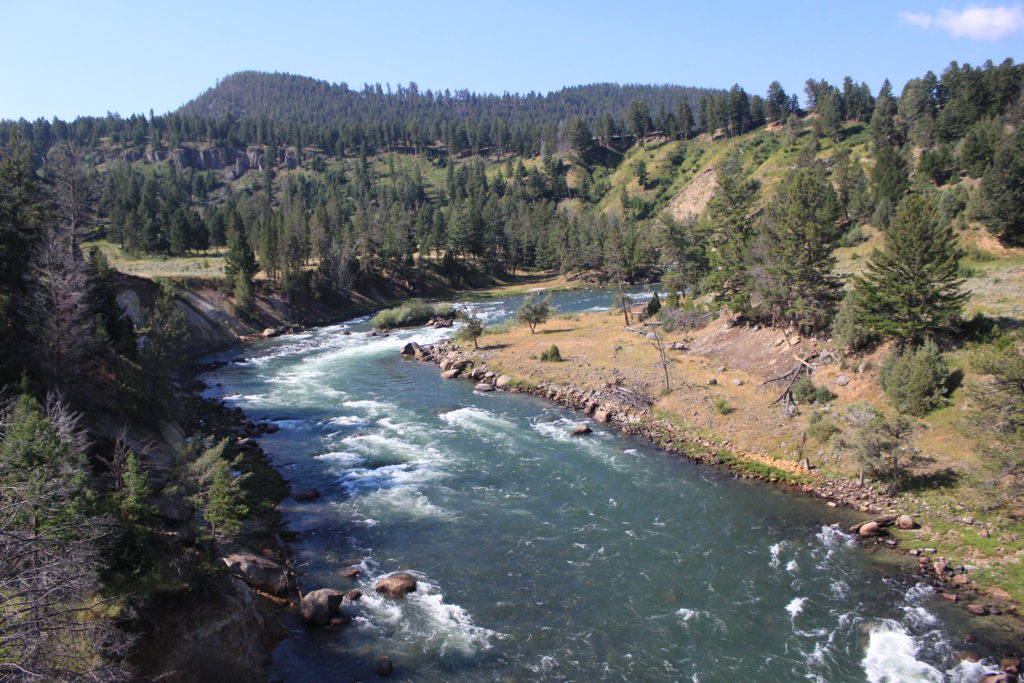
(The Yellowstone River close to the Lamar Valley)

(A petrified tree – one that was buried in ash and soil and transformed from wood into rock)
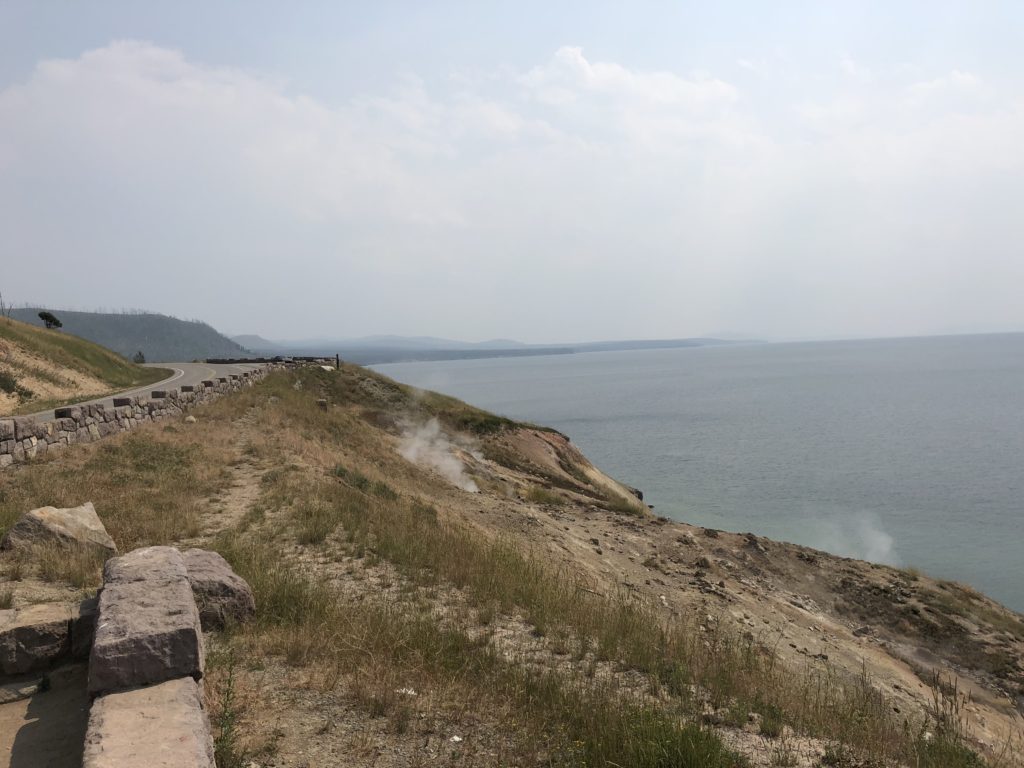
(The massive Yellowstone Lake)
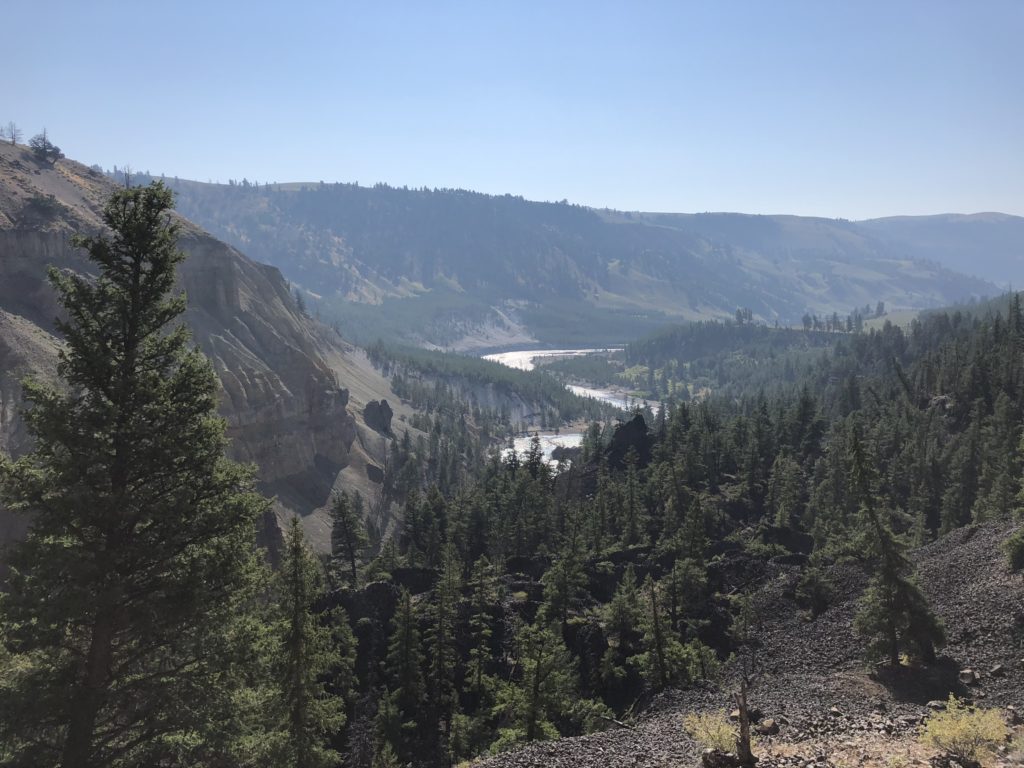
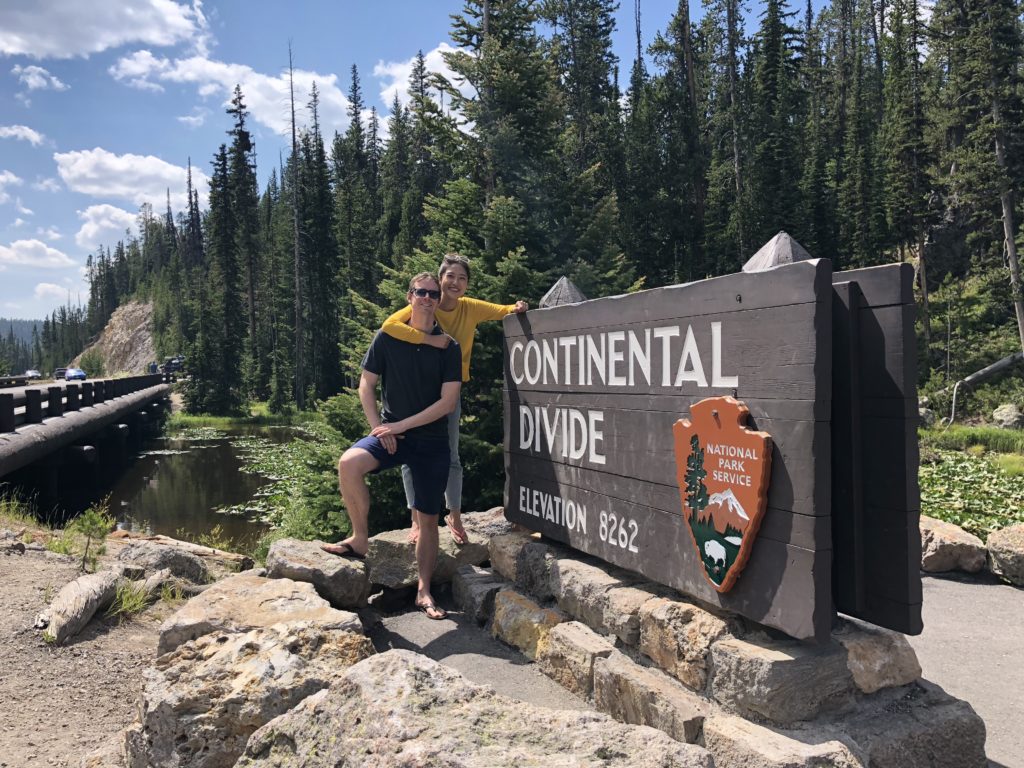
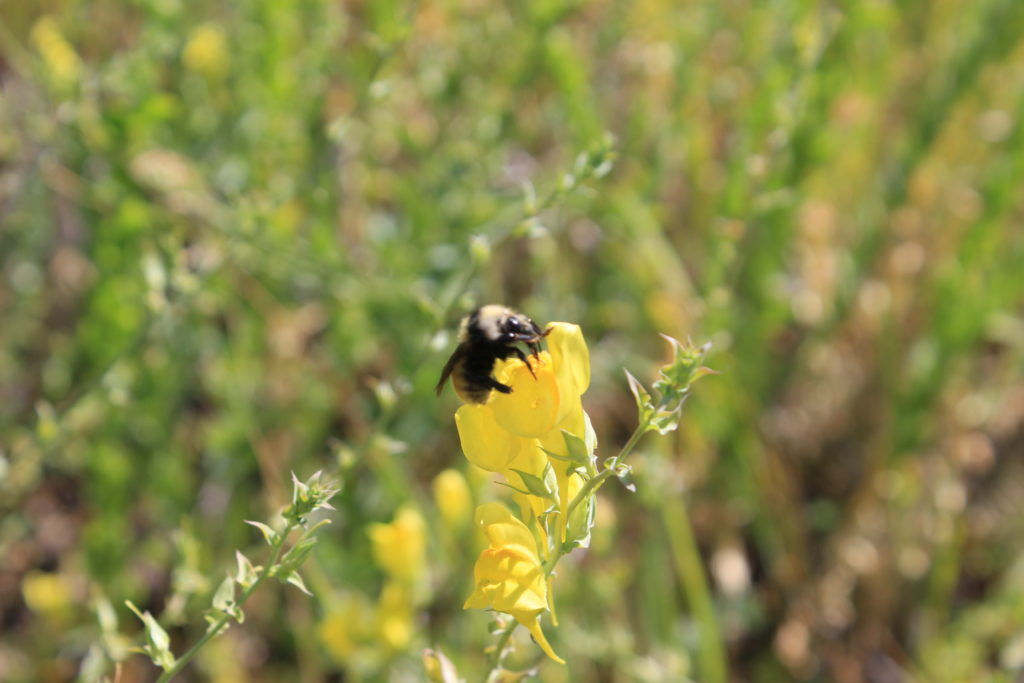
There is also plenty of wildlife. We spotted herds of bison, various types of deer (including the enormous elk), and a lone coyote. Ella hopped out of the car to join a crowd viewing something in the distance and managed to spot the ears of a black bear and its cub before they disappeared into the ether. But a bison herd drinking from a hot spring was probably the highlight:
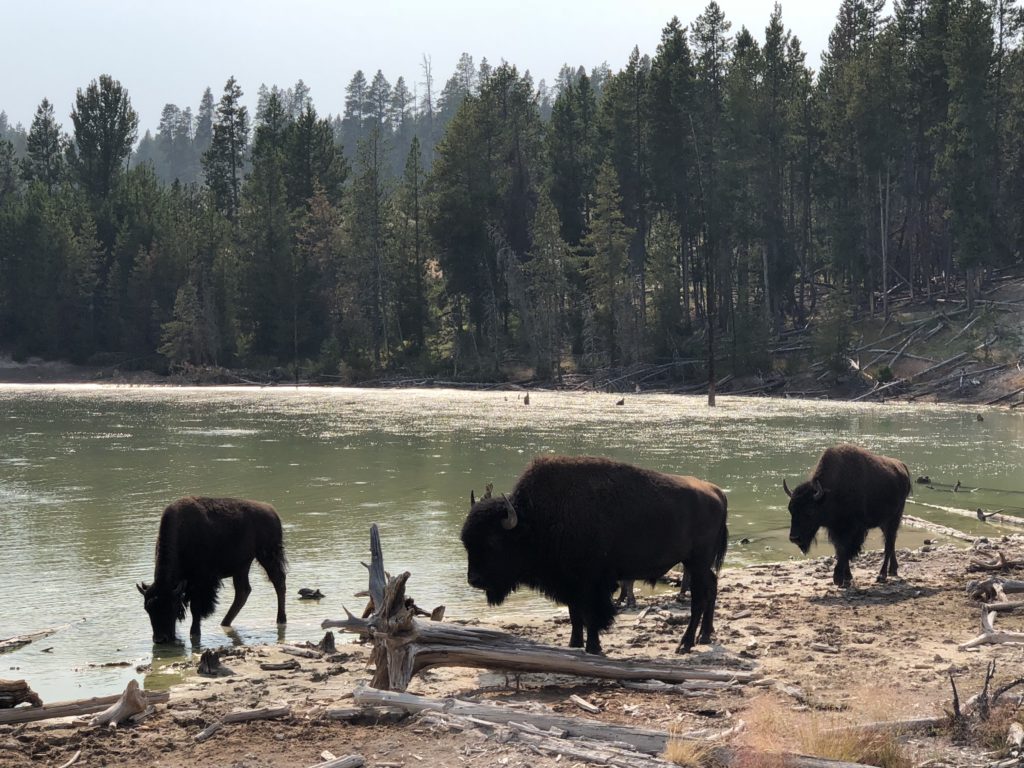
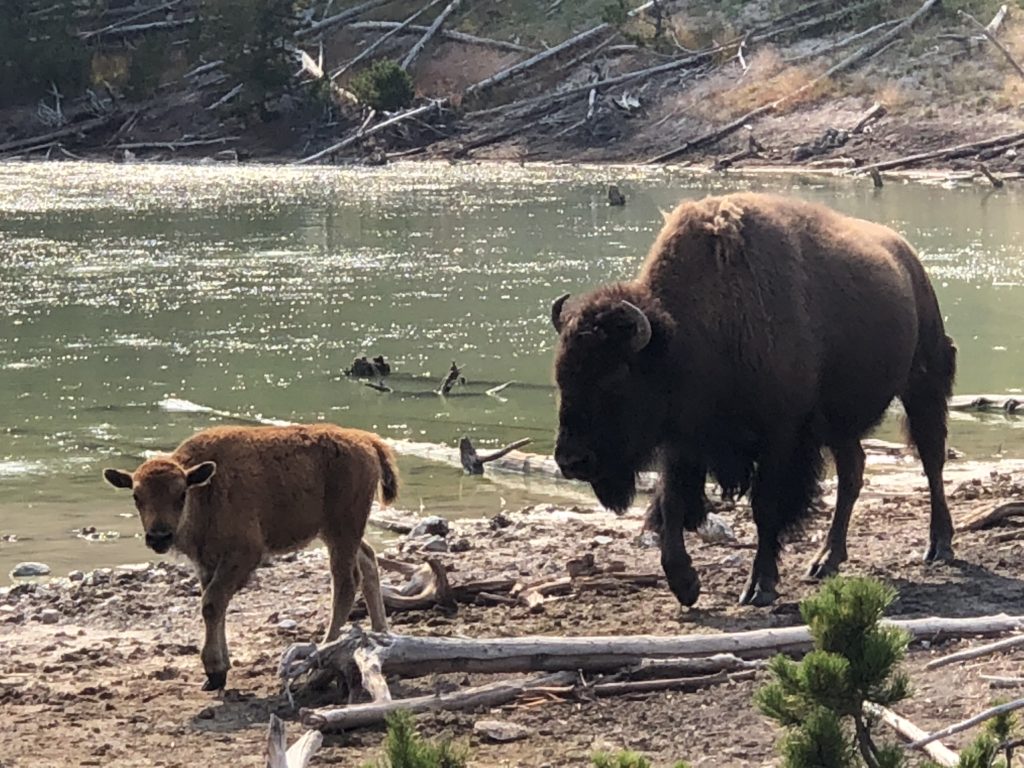
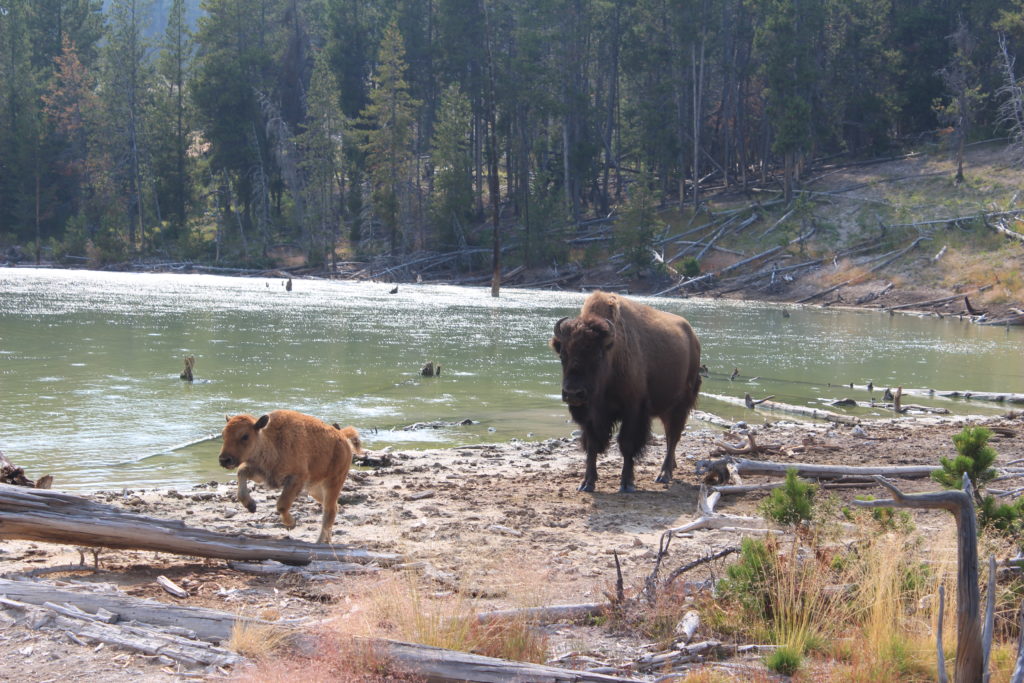
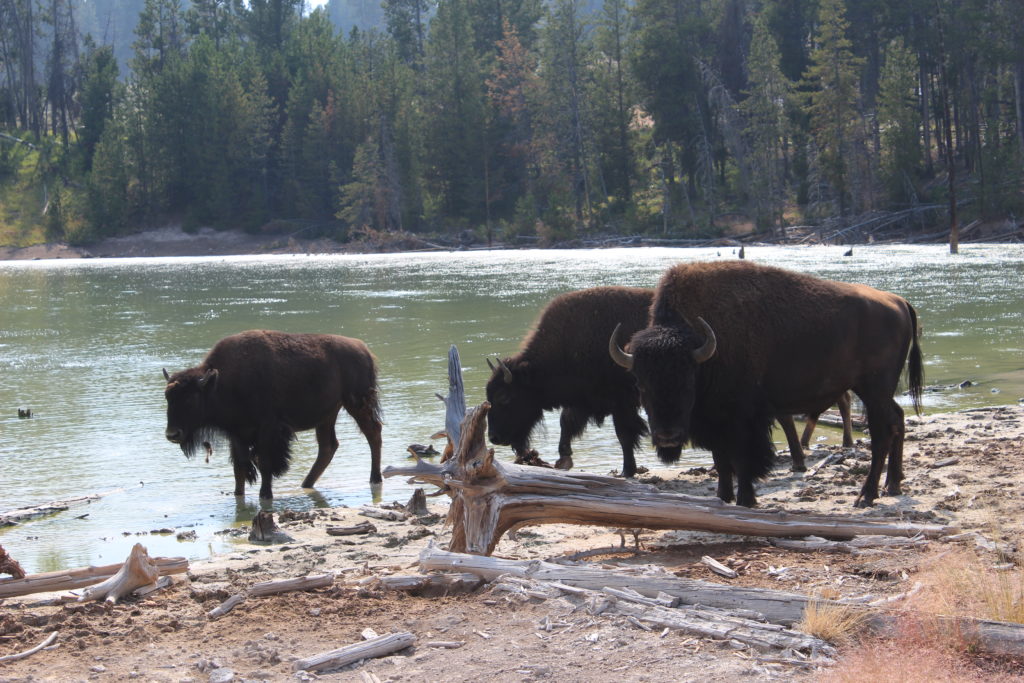
Shifting northward into the Big Sky country of Montana…

